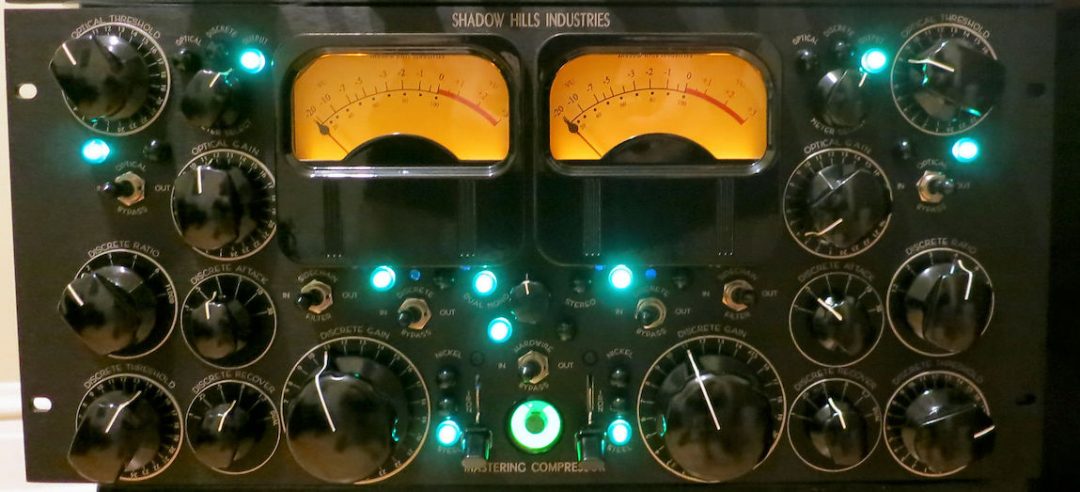The Shadow Hills Mastering Compressor is nothing short of a modern classic. The thing is a monster, equally recognized by its imposing looks and its premium sound. For engineers who need unrivaled dynamic control, the Shadow Hills gets the job done.
Shadow Hills Mastering Compressor Review
This beast of a bus compressor is actually three-in-one. It sports both Optical and Discrete modes with three switchable output transformers for different flavors. The Optical mode is fairly straightforward, featuring only Threshold and Makeup Gain controls. It’s based on the classic [redacted] compressor from the ’60s we all know and love.
Shadow Hills’s Discrete section works on a VCA design. Technically, it takes over where the Optical stage leaves when running two-stage compression. The Discrete compressor provides more precise control over attack, release, and ratio. You can run the Optical and Discrete sections together or separately, essentially giving you three modes of compression in one unit.
The Shadow Hills Mastering Compressor provides excellent tone control thanks to its three selectable output transformers. Switching between these makes a subtle but interesting sonic shift, letting you choose the right character for the material. The three options are steel, nickel, or iron output transformers to get the recognizable sound of different styles of analogue consoles.
The nickel transformer is perhaps the most natural of the them, letting the low-end breathe while smoothly enhancing the highs. Then comes the iron transformer, which has a natural high-end with a minimal boost around 110 Hz. Plus, it goes through a Class-A output stage that only passes even-ordered harmonic distortion for some of that analogue goodness. Finally, the steel transformer opens up the material with a fast and detailed response, and a very small boost around 40 Hz to lock down the low-end richness.
You can run the Shadow Hills in stereo or dual-mono depending on the application. So even though it has ‘mastering’ in its name, it’s perfectly happy on any bus or stereo/dual-mono instrument.
Shadow Hills Mastering Compressor Hardware vs. Plugin
Let’s not mince words here. The Shadow Hills hardware costs about $10,000. It’s totally unobtainable for the average engineer; and even though it is flexible in its own way, it’s not a Swiss Army compressor like some others can be. Think about it: you could buy a stereo pair of UA Classic 1176s and Distressors, brand new, and still save money over a Shadow Hills.
That being said, the Shadow Hills Mastering Compressor plugin is awesome. Not only is it a fraction of the cost of the hardware, but it sounds on-par as well. Developed by Brainworx, the UAD Shadow Hills runs on dedicated DSP in Universal Audio world, while the native version can be picked up at Plugin-Alliance. The latter regularly runs sales and offers coupons, so you can find the Shadow Hills plugin for under $100—an absolute steal.
And like any good digital emulation should, the Brainworx Shadow Hills Mastering Compressor plugin has some practical additions over the hardware. It adds a Parallel Mix control, a Sidechain Filter, and an External Sidechain option in the proprietary toolbar.
- SEE ALSO: Plugins Modeled After Analogue Gear
- SEE ALSO: DISTROKID VS TUNECORE CS CD BABY
- SEE ALSO: POSITIVE GRID SPARK AMP REVIEW
Conclusion
The Shadow Hills Mastering Compressor is a savage on any bus. Despite the hardware being out of reach for many of us, the plugin is a perfectly adequate substitution. Catch the native version when it’s on sale over at Plugin-Alliance and give it a try!
